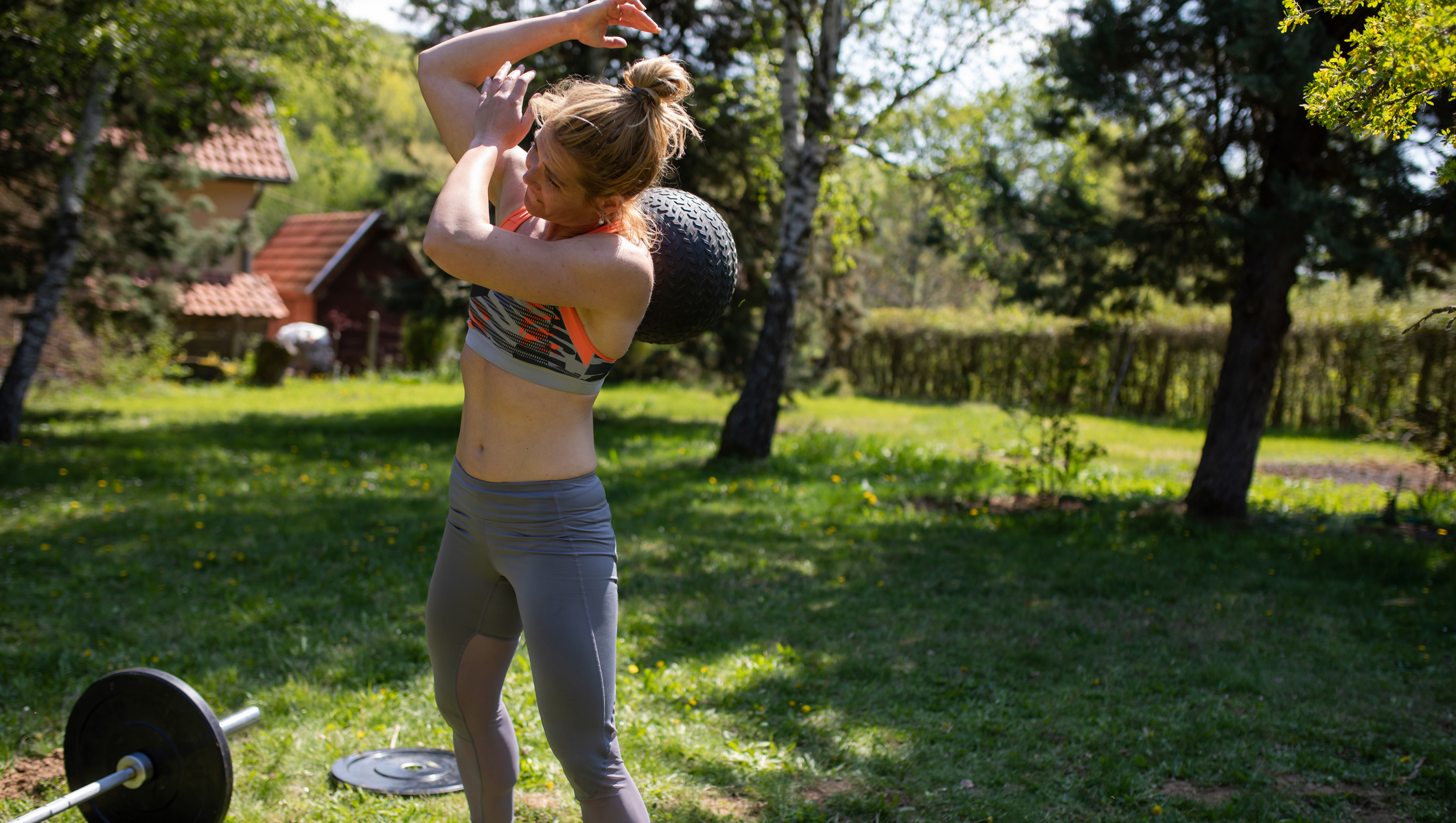How To Do Box Jumps
Build explosive strength with this plyometric power move

When House Of Pain exhorted the world to jump around, jump around, jump around, jump up, jump up, and indeed get down, they were almost certainly not lauding the benefits of adding plyometric exercises to your training regime. But that doesn’t stop the song being great workout advice.
Throwing a few jumps into your workout builds speed and strength, and is especially useful for people hitting the gym to improve their performance in sports. Plus, jumping as high or as far as you can is also fun and a great way to break any monotony that has crept into your workouts.
The box jump is a plyometric move that strengthens your main lower-body muscles – glutes, quads, calves and hamstrings. Box jumps will help make you faster, more powerful and springier than ever, and if you do them for more than a few seconds, they’ll raise your heart rate and burn calories like nobody’s business.
It’s a versatile move, too. “The beauty of box jumps is that you can adjust the height of the box so you can use it for a wide variety of fitness goals,”says personal trainer Joe Spraggan. “ So you can build explosive power and speed using a high box for low reps, or use a lower height to work on foot speed and improve cardio endurance with higher-rep sets. They can also be used, after a proper warm-up, as a great way to fire up your central nervous system ahead of a big legs session.”
“To build explosive power use a higher box and focus on quality reps over quantity. Do up to five sets of five reps – resting for three to five minutes between them – but stop as soon as your form fails,” says Spraggan. “To burn fat and build cardio endurance, use a lower box and do three to four sets of up to 20 reps, resting for up to 60 seconds.”
How To Do Box Jumps

First things first: find yourself a box. Start with a height of around 50cm while you work on getting the form right. Smashing your shins into the top of the box because you’ve aimed too high is no-one’s idea of fun.
Stand in front of the box with your feet shoulder-width apart. Bend into a quarter squat and swing your arms back, then swing them forward and explode up off the ground. Land on the box as softly as possible. You’re aiming to mimic your take-off position on landing – feet flat and knees slightly bent (don’t let them collapse inwards). If you land in a deep squat rather than a quarter squat, it’s a sign that you’ve picked too high a box.
Get the Coach Newsletter
Sign up for workout ideas, training advice, reviews of the latest gear and more.
Then jump back down. Again, you’re aiming to land as softly as possible. You can also opt to step down slowly one leg at a time, which will work the glutes even more and safeguard your joints.
To build power with box jumps aim for one to three sets of three to five reps, using as high a box as you can jump on without sacrificing good form.
To use box jumps for conditioning lower the height of the box. Try jumping up and down continuously for five minutes, maintaining good form throughout. You can also build them into a HIIT workout, as your heart rate will rocket if you keep jumping. For the ultimate challenge try doing box jumps until you can remember the name of another House Of Pain song.
If you’re going to use box jumps to improve your power output, make sure you limit the number of reps you perform each set. Study subjects who did ten sets of two reps with a ten-second rest between sets demonstrated greater power production, take-off velocity and jump height than those who did two sets of ten reps with 90 seconds’ rest between efforts. If your aim is to develop power endurance then higher-rep sets may still be useful – but if it’s all-out power you want, keep it short and explosive.
See related
- The Basics Of Plyometric Training
- Squat Jumps: How To Build Power With The Jumping Squat
- Get A Natural High With The Tuck Jump
Box Jump Variations
One-leg box jump
Halve the number of legs involved in the exercise and the box jump becomes a whole lot tougher. You can take off and land on one leg, or just land on both if it’s proving too tough. The one-legged version is especially good when training for sports involving running, or indeed just running – because unless you’re doing it wrong, you don’t land on two legs when running.
Rotational box jump
Box jumps with a twist, literally. Stand with the box by your side. Leap up and turn to face the box as you go, landing on both feet. Then step down from the box and repeat. Do all your reps facing one way, then turn to face the opposite direction and do your turning box jumps from that side. The rotation movement makes this an excellent exercise for anyone who does sports involving twists and turns of the torso, and it’s especially good for golfers looking for extra power in their swing.
Two-step box jump
Stand about a metre away from the box. Jump forwards once to get closer to the box and then go immediately into another jump up onto the box. This is a more challenging version of the box jump and it can be made even harder by starting further away from the box so you have to take a longer first jump. Don’t get too cocky with the size of your box when doing this variation, especially when you first try it, because it’s easy to go too far forwards with the second jump and rattle your shins on the way up.
Box jump burpee
For those who really want to turn this plyo move – or any exercise – into something that belongs in a house of pain, add a burpee. Because you’re dramatically upping the demands of the move, choose a lower box than usual – your legs are going to tire out quickly.
Once you’ve stepped off the box, drop into a squat, placing your hands on the floor outside of your feet. Jump your feet back and drop your chest to the floor. Reverse the move to standing and prepare for another box jump. If your pulse wasn’t going like a jackhammer before, it definitely will be after this.
Seated box jump
If you’re doing box jumps to build your explosiveness, consider adding this variation to your schedule, because starting from a seated position removes the benefit of the momentum and power generated by squatting before the leap. Set up a bench next to your box – we recommend starting with a box that’s the same height as the bench until you get used to the exercise. Sit down on the bench and swing your arms back behind you, then bring them through and jump onto the box. When you’re sitting facing the box for the first time this will feel like a very bizarre thing to attempt, but once you’re over the mental hurdle of your first jump you’ll quickly get a feel for it.
Weighted box jump
Don’t use a lot of weight. That’s the first thing to say, because you don’t want your body shape to be pulled out of position mid-jump. Use a weighted vest if you can, or hold a light dumbbell in each hand, then perform the exercise as normal. This is a good way to increase the difficulty of the exercise if you don’t have higher boxes.

Nick Harris-Fry is a journalist who has been covering health and fitness since 2015. Nick is an avid runner, covering 70-110km a week, which gives him ample opportunity to test a wide range of running shoes and running gear. He is also the chief tester for fitness trackers and running watches, treadmills and exercise bikes, and workout headphones.









